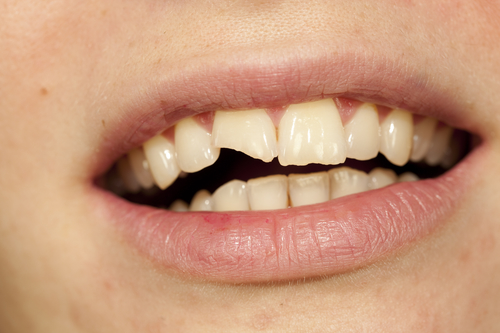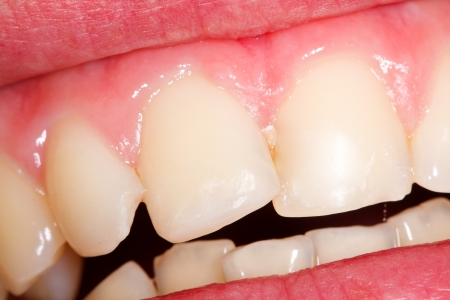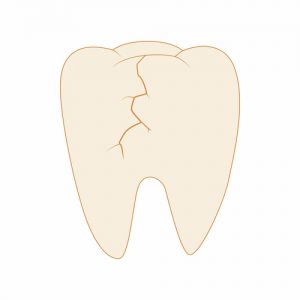Just like there are many different ways you can get a cracked tooth, there are also several different types and variations of tooth cracks. Each crack type will have different signs and symptoms associated with them, varying degrees of severity and also different treatment options for getting them fixed.
If you notice any of the signs and symptoms of having a cracked tooth you should visit a dentist right away to find out what type of fracture you have and to ensure that the tooth is fixed before the crack becomes more severe. Based on the fracture type and the discomfort you feel from the fracture, your dentist will recommend the appropriate treatment option.

Below we define the different types of fracture that may occur to your teeth, explaining how the crack effects your tooth structure.
Craze Lines
This is the most common type of tooth fracture and should not concern anyone in reality. Some people may even have this type of fracture without even realizing it. Craze lines are tiny shallow cracks that occur only on the outer enamel layer of the tooth causing no discomfort at all.
Chipped Tooth
The single most common dental injury in adults are chipped teeth. This occurs when a piece of the tooth physically gets chipped away, usually as the result of a blow of some sort to the mouth, biting down on something hard or from tooth grinding.

If you are unsure about the severity of your chipped tooth, you should visit a dentist because depending on the size of it, the inner layers of the tooth may be exposed to the outside world meaning that it can become a more serious problem if not treated properly.
Cracked Cusp
The cusp on your tooth is the pointy part on top that is used for chewing. To get a better understanding, your canines have one cusp while molars have 4 to 5 cusps per molar.
A cracked cusp occurs when a portion of the cusp cracks, usually around a filling. In most cases, a fractured cusp does not cause any damage to the inner layers of the tooth but if it does some dental work will be required to eliminate symptoms of discomfort.
Cracked Tooth
 This is diagnosed when a vertical crack appears, extending from the chewing surface of a tooth down to the root. If not treated in time, the crack may spread causing the tooth to fully break in two. It is common for pulp damage to occur from a cracked tooth as well.
This is diagnosed when a vertical crack appears, extending from the chewing surface of a tooth down to the root. If not treated in time, the crack may spread causing the tooth to fully break in two. It is common for pulp damage to occur from a cracked tooth as well.
Early treatment is required on a cracked tooth to eliminate any further problems which can progress rather quickly. If, however, the crack extends below the gum line, it will not be treatable thus it will require tooth extraction.
Split Tooth
When a cracked tooth is not treated right away, it has the potential of suffering further damage and being visibly split into two pieces. This is considered a split tooth and unfortunately can not be fully saved. Usually only one part of the split tooth will be able to undergo restorative treatment while the other portion will have to be removed.
Vertical Root Fracture
This type of tooth fracture is distinct from all the others in that the crack first appears at the root of the tooth and makes it’s way up toward the chewing surface. Because it is at the root, the crack will not be visible making it very difficult to diagnose and almost impossible to restore. In most cases, the damaged root will need to be removed, often times meaning that the entire tooth needs to be extracted. In multi-rooted teeth, it is likely that only the damaged root will be amputated leaving the remaining roots and tooth intact.